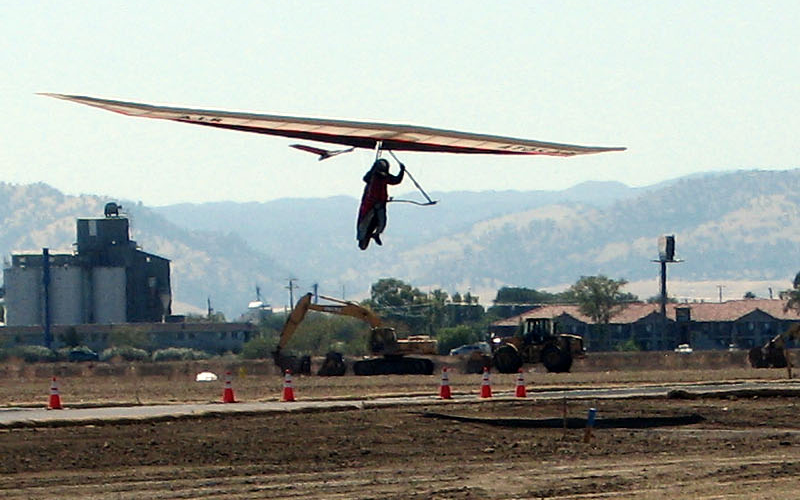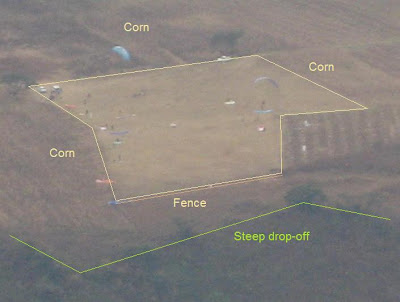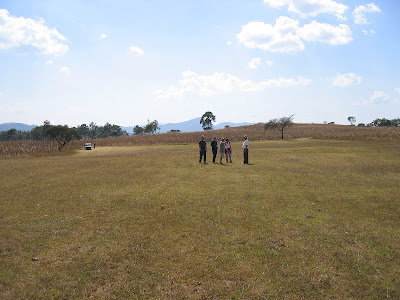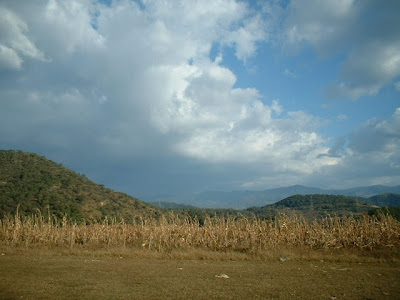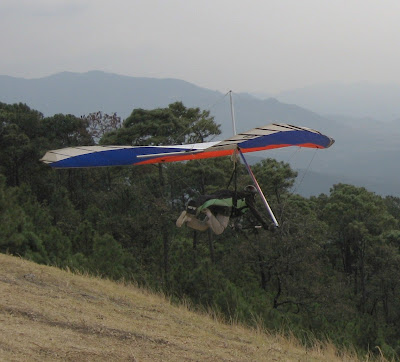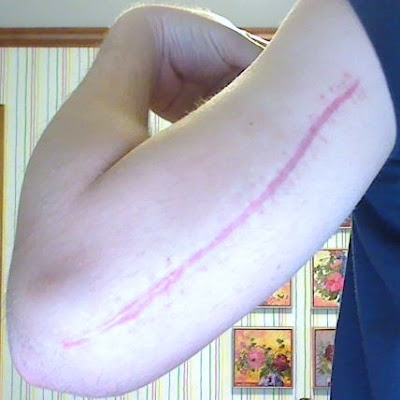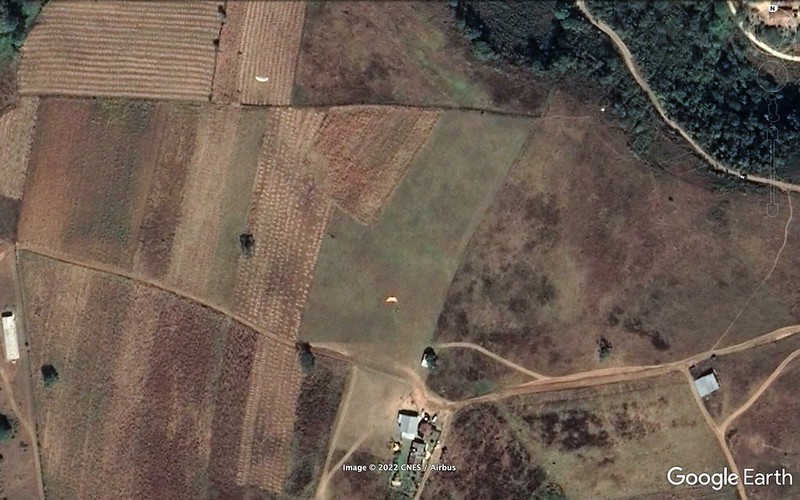http://www.hanggliding.org/viewtopic.php?t=20756I never knew about that tandem incident at Lookout (or that Bo was ever an instructor there).
How is Zach Etheridge doing?
I haven't been able to find it lately but in 2009 around the time I went down there Lookout's website was advertising something like its "flawless seventeen year tandem safety record" - which, to the untrained eye...Bob Flynn - 2011/02/04 11:26:34 UTC
Lookout keeps this kind of stuff under their hat. You never hear of accidents there. But every time I go there, I hear about quite a few. Blown launches, tree landings, etc.
Then seven years ago Bo's at Currituck on a borrowed Combat with two millimeter racing wires that he's been advised not to get creative with. And he gets creative with it. And he breaks it. And his parachute isn't connected to the harness so it comes down separately and still in the deployment bag. And he spends a very long time in the hospital in very bad shape.
He started flying and was an instructor at Kitty Hawk after I did and was and I knew him casually and had always been on friendly terms.
He shows up at Ridgely at the 2007 ECC shortly after I've developed the little shoulder mounted "Barrel Release - Remote" I referenced a couple of days ago. He's at the picnic tables, my harness is hanging from a tree five yards away, I ask him if he'd be interesting in seeing it. He walks over, glances at for a second or two, says:
"Tad, you have taken a very simple device and made it complicated. I won't fly it and I won't endorse it."
and turns around and returns to his perch.
I never had another word to say to that asshole. And I checked the flight line the next morning just to confirm that he was, indeed, just another Davis configuration, bent pin, 130 pound Greenspot shithead. No problems there. And I can name you two pilots who would still be alive if they had been using that configuration subsequent to the exchange that evening.
You don't get to kill a student at the edge of anything remotely resembling that field and three quarters kill yourself twice and talk to ANYONE like that - 'specially not me.
I never do. 29 years ago near the end of this month I was thinking about landing my Comet on the far side of the creek where *I* wanted to instead of in the middle of the creek where *IT* wanted to. I trashed one of its downtubes.You have to be thinking about landing somewhere.
This was what at Lilypons near Frederick (39°17'33.87" N 077°26'34.05" W), which was at the time the big DC area training hill and student pilot factory. Tom Haddon was teaching a class for Sport Flight. He had been a Kitty Hawk instructor in the real dinosaur days and in the fall of 1980 had shown up on the dunes with the first Comet I had ever seen shortly after having won the US Nationals at Ellenville on it. Real nice guy, great dune pilot, one of my big heroes back then. He made me understand what I had just done and I never forgot that lesson.
All I ever think about is getting the glider into the field. After I've done that I totally stop thinking and land when the glider tells me it wants to.
Those guys have engines, gas, flaps, airbrakes, tail hooks... I don't, I don't care, I'm not in any rush. And I don't know all that much about real planes but I suspect that their pilots tend not to make too much of the issue and get in trouble when they do. I recall going up in a Cessna with an F-4 carrier pilot while he did a few touches and gos and him being very patient on the issue of it making contact with the runway.Even airplane pilots are thinking about a spot (their touch down point).
I'm looking at the last thing I don't wanna hit at the downwind edge of the field. I'm trying to get as close to it as I possibly can while carrying enough speed reserve to deal with any unpleasant surprises. After that I'm all accuracied out. How can that POSSIBLY not work?I think it's much easier to have a point picked out than a general area. You have to have some way to judge accuracy (in preparation for LZs fitting into my third class).
My flares sucked 28 years after I started doing them. If I flew a LOT - or, actually - if I flew a lot of FLIGHTS, I'd get pretty good. I'd start feeling cocky. But those streaks tended not to last very long.Gonna have to disagree with you there. My flares sucked for a long time after I started flying.
I think Joe's a very smart guy. I don't know if he has everything right but if someone held a gun to my head he'd probably be my top instructor recommendation - at least for free flight.What do you think about Joe Greblo's 'moonwalk' approach to landings?
I always meant to. But by the time I started meaning to I was only doing long high flights and thus few and infrequent landings. And I'd always forget to try it. And I was so incredibly hardwired after all those years of no-stepper brainwashing. But try giving it a shot at Barker next time.I've never tried it. I'm so used to the way I do things it's very difficult for me to change.
And, like I said, we broke a lot of arms foot landing in high grass at High Rock. Motion: Landing in high grass is dangerous. Any seconds?During the summer the grass frequently gets too high at Hearne to safely wheel land. And we once had a student on a tandem out there break a wrist after a front wheel hit a large ant hill.
I'm thinking that Christian and Jayne are making a pretty good case for their technique for wheel landing in tall(ish) grass being safer than the conventional approach. Might not be a bad idea for Yosemite - given that they make wheels that can be locked for takeoff and unlocked in flight.On my only three XC landings, one was in a rocky field (in Mexico), one had tallish grass...
Whenever I flew XC I'd always looked for cattle (never horses - they'll eat your glider while you're hauling your harness to the gate and you can't scare them away). You got cattle there's no vegetation that you're gonna hurt or is gonna hurt you. And the only bullshit that ever really did anyone in this sport any real harm is the kind we get from our instructors and other qualified pilot fiends....and one was in a cow pasture. I would have only felt comfortable wheel landing in the last one (but then it was strewn with 'land mines').
See above.Wheels are greatly discouraged. Wheeled gliders tend to roll off of the steep launch during hook in with or without the pilot. The Landing Zone is high grass offering no advantage for a "wheeled" landing.
I didn't use wheels on the dunes pretty much for the same reasons. They were a major pain 'cause you couldn't park the glider while you rested going up steep slope or in the wind at launch when you wanted to mash the basetube into the sand with a foot. And they weren't likely to do much good if you came down in soft sand. Plus you're not flying on the dunes unless there's a lot of wind and any idiot can foot land a glider when there's a lot of wind.
North Dakotan badlands. Like dune flying but you can't afford to crash. Wide open short grass landings - bottom and top. Lotsa wind.I know you have a lot of east coast experience, but have you flown out west?
1. If people wanna develop and use skills to enable them to exploit dangerous environments for airtime - great. I'd do it myself in a New York minute. I've done it.I haven't (much), but my impression is that LZs like Kagel's are not uncommon in the drier parts of the country.
2. But if you're regularly landing a lot of people in fields with a lot of rocks in them you're gonna hurt more of them than you will at a sod farm. That ain't rocket science.
3. Create an Injun Country Special Skill signoff to qualify to fly Kagel if you must. But don't force people who just wanna fly Lookout, Hearne, Funston, and Yosemite to get it.
Well DUH! Like I couldn't tell that just by reading Dave's posts? Must be something in the water. Or air. Or both.And the densest population of pilots in the US is without a doubt in SoCal.
OH WAIT! You probably meant there are a lot of people who fly hang gliders who live in that area. Yeah, that too.
Nope. We make them so we can roll them up and put them on the top of the car, they make them so they can take the wings off and put everything on a trailer behind the car. You've only fucked up if you put your Dacron or fiberglass down in seven foot high corn and/or can't walk away.It's my understanding that if a sailplane pilot lands out he 'FUCKED UP'. In hang gliding, out-landings are expected.
By light air I meant drooping ribbons. At Lookout in 2009 I just watched. There was a good thermal day, everyone and his dog were up. Twos on Falcons, hotshots on bladewings and Atosses, everything in between. It turns off late in the afternoon, people dropping out from locally and coming in from Henson. Negligible air, nothing going on. It was a bloodbath.Really? Even smooth air? I think hang gliders are actually pretty easy to land in smooth air, even with light wind.
I wish I had seventy bucks for every seventy dollar aluminum downtube and a hundred and forty bucks for every hundred and forty dollar carbon downtube I saw trashed within a half hour period. It was ridiculous. Nearly three decades I'd been watching - and doing - that kinda crap.
And every eight gliders or so I'd watch someone deliberately roll in on the wheels. And none of them was bonking, whacking, or groundlooping. And I went up and talked to each one of those guys.
Another point... The more wind you have in your face the easier it is to land on your feet. But also... The more wind you have in your face the less it matters - no matter what you're coming down into shy of a minefield.
I watched one of your landings a bunch of times. I think it was your adverse yaw clip (with a keel view). Clean, flawless, textbook. Made my skin crawl.I'm a pretty average weekend pilot and pretty much always stop the glider on my feet.
You've rotated to vertical and your hands are up high on the downtubes right where they're supposed to be. You're skimming the ground at twenty miles an hour. If that glider abruptly stops for any reason before you tell it to and you don't get your hands outta there FAST you're gonna snap an arm in half or rip it out of its socket. Happens all the time to pilots better than you and me put together.
So that they're ready to flare.This was the case when I learned there as well. But the reason wasn't so that they'd be ready to flare...it's because they've only flown from the downtubes on the training hills.
So that they're ready to flare.Plus, they're using training harnesses that don't allow going prone...
When you've been hit by nasty shit up in the air have you ever had an urge to rotate to vertical and grab the downtubes to enhance your control of the glider?I don't think they have any problem with aerotow students going to the basetube on their first mountain launches because they're used to flying from the basetube.
1. Are Jeff's training hill landing areas as dangerous as Lookout's so that it's ALSO critical that they get their landings on their feet four out of five times?I'm sure Jeff has his students fly from the downtubes initially for the same reason.
2. If Jeff had had all of his students up to the Two signoff go prone and to the basetube ASAP and do nothing but wheel landings how many of them would've been killed as a consequence of landing prone in narrow dry riverbeds with large rocks strewn all over the place and fields filled with seven foot high corn?
3. What's the Packsaddle LZ like? Narrow dry riverbed with large rocks strewn all over the place? Seven foot high corn?
http://OzReport.com/14.129
Packsaddle accident report
2010/06/30 13:01:28 UTC
This isn't Yours Truly on another one of his wacko jihads. This is your primary witness saying that in his opinion the guy was killed because all of his driver's ed training was focused on parallel parking and he had no clue how to keep the car out of the oncoming lane on the highway.Shane Nestle - 2010/06/26
Being that John was still very new to flying in the prone position, I believe that he was likely not shifting his weight, but simply turning his body in the direction he wanted to turn.
http://www.hanggliding.org/viewtopic.php?t=13745
Good News vs Sad News
Note the pattern?Steve Morris - 2009/10/02 05:16:32 UTC
The pilot had a bad flight two days earlier (poor airspeed management and turning too close to the hill) and got a serious lecture from some more experienced pilots in the LZ. Two days later I was asked to come along by a friend of his and video their flights so they could see what he was doing wrong. Little did I know he had a new harness and helmet that were confusing all of his flying sensations and this was ultimately a factor in the accident. In the video you can clearly see the glider stall and then turn into the hill while the pilot stays prone fighting the turn, but not lowering the nose for airspeed. The whole thing really upset me because I wasn't his instructor and I had no idea of his skill level (I'd never seen him fly before). I was just there to tape the flights and then he died. Everyone was asking me what happened and I didn't have any good answers. I believe the USHGA changed the Hang 2 requirements after this accident to require that pilots demonstrate airspeed control in the prone position as part of the rating, not simply from the uprights (tasks l and m in the H2 rating requirements).
If one MUST be new to some form of flying make it upright. Not first teaching someone how to fly prone on an aircraft that's designed to be flown prone and affords lethally compromised control when not flown prone is pure unadulterated insanity and, as far as I'm concerned, criminal negligence.
I just checked the current rating requirements and was stunned to note this "While in preferred flying position" bullshit. What incredible assholes. This is the 130 pound Greenspot of free flying. This isn't the PILOT's "preferred flying position". This is the shitheaded INSTRUCTOR's "preferred flying position". This is EXACTLY like Addendum 1 - "At the discretion of the Observer or Instructor AND NOT THE PILOT." Why allow the Pilot In Command to exercise sound judgment on the safe control of his aircraft? We can have so much more fun when some douchebag on the ground or in Matt's office arbitrarily dictates what he will and won't be allowed to do.
http://www.youtube.com/watch?v=PjcCyMsOAOQ
dead
I one hundred percent guarantee you that that was NOT his "preferred flying position" 'cause I was down there when he (Alan Wengren (Jack Show "HangDog")) first showed up for lessons. He was a general aviation fixed wing and RC chopper pilot and took to hang gliding like a duck to water. He latched onto me 'cause he recognized that I knew what I was talking about and his instructors were scumbags who didn't. We were in almost daily contact after I left and he was absolutely furious about being forced upright.
US hang gliding is supposed to be pilot controlled aviation - which itself is a monumentally crappy idea. But it's managed to go even farther down the evolutionary rungs of knuckle draggers. In rough descending order: instructor, flight park operator, tug driver. And for combos... Do the math.
This is NOBODY's "preferred flying position" above a hundred feet.
Anybody wanna hazard a guess as to what his "preferred flying position" at forty was? (That's not what happened by the way. He was on final when he got hit by a powerful thermal which pitched him up and dumped him in the falls as he flew out the other side.)1982/06/20 - Tom Perfetti - 32 - Intermediate - Proair 180 - High Rock, Smithsburg, Maryland - Massive internal injuries
Good conservative pilot on final approach into turbulent and thermal landing zone in early afternoon. Sudden gust pitched glider down radically from forty feet. No chance to recover.
No question as to what his "preferred flying position" at seventy was.1994/10/29 - Gerry Smith - 56 - extensive, USHGA #216, Advanced, "flying for 20 years" - UP Comet 165 - Sand Dollar Beach, Big Sur
- internal, head, face, hip, arm
Rich Collins:
At about seventy feet he decided to land and began his regular approach. I know this approach well, because after seeing him perform consistently good landings I adopted it as my own. First, you climb to the upright position at about seventy feet on your base leg, with a slight turn toward final so as not to be bumped downwind. Second you turn your glider into the wind and begin final approach. Third, you pull in the bar. I know Gerry pulled in the bar because I saw him do it. Granted, you can't pull it in very far but he did pull in.
http://www.hanggliding.org/viewtopic.php?t=13619
Landing an Atos glider
And SEVEN DAYS LATER...Vince Endter - 2009/09/13 21:25:45 UTC
I am always trying to improve my hang gliding skills. Even though I have only bent two weak links in the last two years, I have never been satisfied with the way my glider lands. In talking with numerous other Atos pilots, there was a common thread. Some almost never had trouble landing their gliders and other had trouble most of the time. I think I have come up with a reason and a solution.
It came to me when I looked at a picture of a friend, Bill Vogel, landing his Atos VQ. His hands were very high up on the down tubes.
http://www.flyatos.com/bill_landing.jpg
Bill always seems to have a good flare on landing.
http://www.hanggliding.org/viewtopic.php?t=13712
Very sad news
And there's no question that his "preferred flying position" above ground effect WASN'T prone with his hands on the basetube.Vince Endter - 2009/09/20 20:38:57 UTC
Of all my reports, this is the hardest I have had to write. Bill Vogel died yesterday landing his glider. I was the only witness to the accident.
We had launched from Elk. Bill launched first, then Rich, then me. We could not get higher than launch. We headed for the thistle field (the creek bed next to the thistle field). Bill was about eight hundred feet below me. He had set up to land between the two sets of wires crossing south of the thistle field. I radioed to him to watch out for then crossing the creek bed. He did not reply.
He continued his approach to land in the upright position. It looked like he was at the same elevation as the wires when the finally saw them about a hundred feet away at thirty feet. He made a quick left hand turn, it looked like he was trying to make a 360. When he was 180 degrees through his left tip hit a bush and his body impacted an eight foot bank at the creek bed's edge. His glider stopped about eight feet past where he first hit. He did not move after the crash.
I radioed Cathy to call 911. I landed about two minutes later and ran to his aid. Rich was about a minute behind me. Bill was unresponsive when I got there. Rich and I performed CPR until he was pronounced by the life flight nurse.
Our hearts go out to his wife Cathy.
But the goal of hang gliding is never to maintain a lot of maneuvering speed with the option of picking up a lot more to respond to any surprises, maximize control of the wing before come into ground effect, and survive the flight in good enough shape to give it another shot next weekend - it's always and solely "TO HAVE A GOOD FLARE ON LANDING"!!!
If Chris Starbuck can fly for a third of a century and in a lot of XC competition only able to do wheels then I would guess that students in South Texas would be able to get along pretty well for a long time also.
Good pilots stay prone into ground effect. I stay prone into ground effect. If I can stop it on my feet afterwards - fine. If not, BFD - I knew from much past experience that it was gonna be iffy at best anyway.
We should be teaching people to fly like good pilots from Day One - not forcing them to fly like crappy pilots and then rewarding them with the basetube after they've "mastered" that.
My first flight ever - fifty foot dune - I was given (by Jim Johns) the standard song and dance about rotating up, hands back to the downtubes, flare... I didn't get into the sport 'cause I always dreamed about whipstalling a plane at the precise instant to stop on a dime on my feet. I got into it 'cause I wanted to fly like a bird. And I subconsciously did the math and realized that the whipstall was gonna cost me airtime. So I just extended my glide and let the plane land when it wanted to - like every other pilot on the planet EXCEPT hang glider pilots do. And it was really cool! And I got mildly rebuked for not doing it right. And then I drank the Kool-Aid and spent the next several decades allowing that idiot cultural no-stepper tyranny compromise my safety, break my downtubes, and insure that the last thirty seconds of damn near every high flight I ever made were spent in well justified fear of screwing up at the end.
Ever read a Wills Wing owner's manual real carefully? Ever notice that they're telling you to violate the hell out of their own placard limitation for pitch at one of the two most critical and dangerous phases of the flight? Doesn't that seem a wee bit weird?
Hey Mike, maybe if you'd revise your owner's manuals to read more like sailplane manuals hang gliders wouldn't be so difficult to land and more people would survive more flights in good enough shape to buy more of your gliders.All of this reminds me of a comment Mike Meier made when he was learning to fly sailplanes. He mentioned how easy it was to land a sailplane (with spoilers for glide-path control and wheels), and then said, "If other aircraft were as difficult to land as hang gliders no one would fly them."
I'm ASTONISHED that you're asking that. That's exactly what EVERYBODY was doing on dinky little dunes and inland training hills when I learned and I'd guess for at least fifteen years thereafter.Should instructors teach students to fly from the basetube before they go off a mountain? I dunno...most training hills aren't very big and students don't have a lot of time to transition, do some turns, and then transition again. They certainly don't have time to do all that and go prone.
And there is NEVER a need to "then transition again" on a training hill (unless the ground is really wet).
When I was "teaching" on the dunes I'd start people off on the basetube whenever there was enough wind to make it easy. If I had really been smart I'd have had them all land that way too when nobody was looking.
In 1994 I was in an Instructor clinic run by Mike Robertson who's something of a pioneer and was a big wheel in the USHGA Instructor machinery. He recognizes stand ups for what they are, lands on his wheels whenever possible, made us all land a trainer on wheels, and pushed us in that direction.
I'm glad I didn't.I'm glad I had tandem training before I first soloed...
And get any rating, One through Five, for which they otherwise qualify completely on their wheels on strips, not spots - just like people do in REAL aviation, from weekend Cessna jockeys to Alaskan bush pilots to carrier fighter jocks. But the problem is that pilots who have absolutely no need to land on their feet are unable to choose to land on their wheels and get rated. They are thus pretty much ineligible to fly ANYWHERE and TOTALLY ineligible to aerotow.I agree that pilots should be able to land on wheels should they choose without criticism.
1. Not as much as a broken arm - or neck.But only performing wheel landings will limit the sites a pilot can fly.
2. I've flown 52 sites in ten states in my career - none of which would've been put the least bit off limits to wheels (or floats) only.
3. I'm wondering just how much trouble it would be to clear a two hundred foot wheels safe strip at Kagel.
